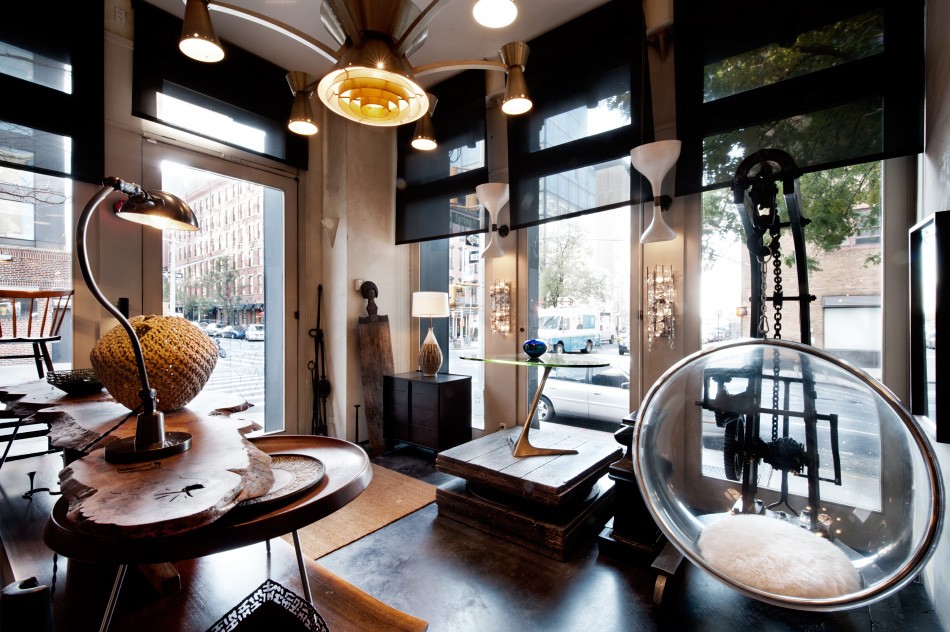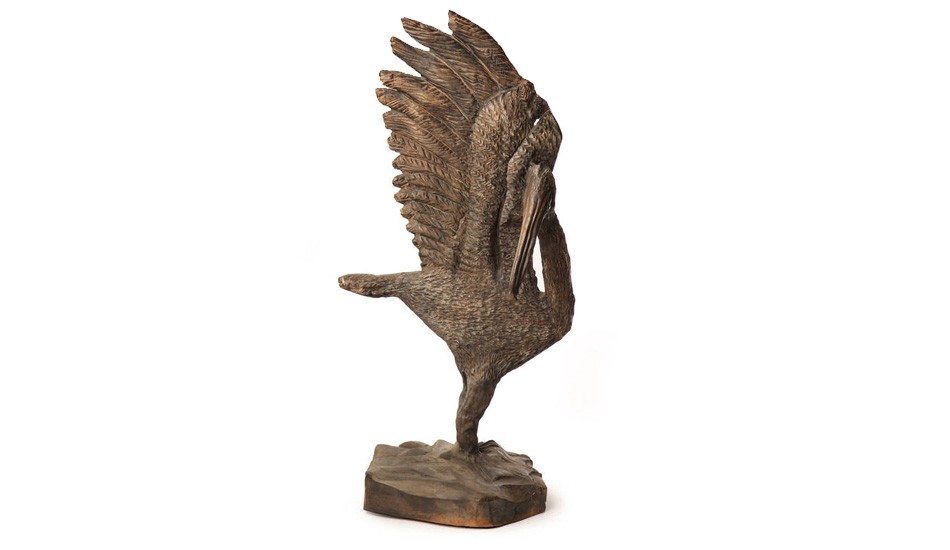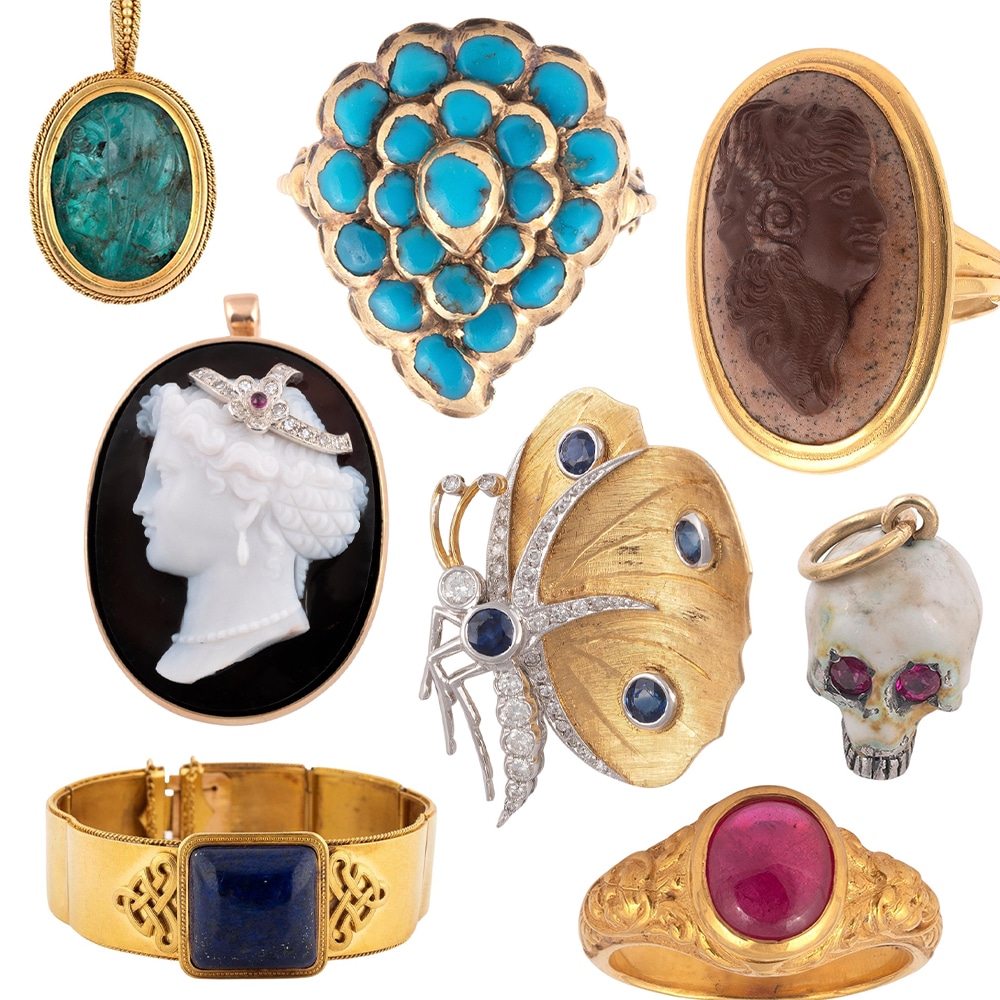
November 2014John Birch founded New York design mecca WYETH, named for his son, in the mid-1990s with his two brothers, Philip and Paul.
Hands-on shop owners are a dime a dozen, if by “hands-on” we mean people who are physically present and engaged in the day-to-day work of running their businesses. But then there’s John Birch, who established WYETH as a source for vintage modern design almost two decades ago in New York’s Tribeca neighborhood: He takes the concept of hands-on to another level.
Birch personally designs many of the new pieces that WYETH sells in its two main storefront locations, one now in Soho, on Spring Street, and the other in Sagaponack, on Long Island’s East End. He artfully oversees the arrangement of the myriad objects found on the showroom floors. And he’s intimately involved in the renovation of a sprawling space in Tribeca, just a couple of blocks down from the Soho outpost, which is set to open in the spring. On a visit there earlier this fall, he seemed very much at home on the construction site, specifying to his in-house crew how the finishes should look and when the sanding is going to happen.
And Birch is likely the only successful modern-design dealer who spends his Hamptons Saturdays not cavorting, but welding by himself in a studio, wielding a red-hot torch to create unique furniture pieces to sell.
“Making things has become the most rewarding part of what I do every day,” says Birch, who is definitely more of a doer than a talker. “When we are not building things, I feel very stagnant.”
Birch’s drive has made WYETH a go-to for modern and contemporary design among today’s most discerning collectors and interior designers. Though a lot of what is sold is from the middle of the 20th century, Birch does not like the term “mid-century modern” as it seems too limiting for the variety of pieces he puts on display. (He only likes it for his age, which he declines to otherwise specify.)

At WYETH’s Soho showroom, Hans Wegner’s Circle chair, 1965, sits in front of a Rudolf Rasmussen 1940s mahogany breakfront cabinet on a plinth base.
“I call it classic modern design,” says Birch. “We wanted to present something fresh, new and interesting and a mix of styles and periods. Classic, quality modern design will always be in style. When hasn’t it been in the last hundred years?” He stresses that there are some Victorian and Shaker pieces that to him seem as modern as an original Hans Wegner Tub chair, the kind of rarity he features when he can find it.
One of the most important relationships Birch has in the design world is his exclusive U.S. representation of the famed Danish firm PP Møbler, established in 1953 and known for its collaborations with Wegner, which began in the 1960s. Several years ago, the members of the company’s founding family, the Pedersens, came to a show Birch put together featuring the work of Wegner and Johannes Hansen at his Sagaponack store.
“We started this relationship based on knowledge and understanding,” says Birch, who has an intense appreciation of craftsmanship. “They make things as good or better today, because of the machines now. I don’t think there’s a better company in the world.”
Birch’s enthusiasm extends beyond spare, utilitarian Danish lines — the whimsical strain of modernism is also represented by leather animals by the German firm Deru, for example. Birch singles out the burnished bowls and other decorative, sculptural objects by David Ellsworth, “the greatest wood-turner who ever lived,” as something he’s proud to offer. He’s equally excited about such reclaimed architectural elements as a set of early-20th-century solid steel office-dividing walls, once installed in the offices of a Connecticut company, that he is restoring to former glory.
1STDIBS VIDEO EXCLUSIVE: WYETH ON DESIGN

A French Art Deco Machine Age chandelier, 1930s, hangs above a Finn Juhl Chieftain chair that’s stacked above a set of Poul Kjaerholm PK11 armchairs, all from the 1960s.
To be able to house that variety of pieces, expansion is key. “It’s New York City — you can’t stay in one place,” says Birch. “This business requires space, and you can never have too much of it.”
The first priority is the new 10,000-square-foot Tribeca storefront, on Canal Street, which will largely house the original furniture pieces made in his large Brooklyn workshop, where a dozen full-time employees comprise his crew. Gleaming steel coffee tables in round and biomorphic shapes are something of a specialty, since the form wasn’t made very often in the high modern period. (Most clients won’t see it, but a large new warehouse in New Jersey will also facilitate Birch’s passion for getting bigger.)
The Sagaponack store, opened in 2009, has boosted WYETH’s fortunes as well. “It’s interesting how clients use both facilities,” says Birch. “Often a sale starts out there on the weekend, and then they come into the city to finalize a deal. It’s been a great benefit to us.” Birch has a house close by, allowing him to both tend to the shop and to weld in peace when he wants to.
“We have been growing fast, even though I’m not always a very organized person. I tend to work organically,” Birch says as he continues to survey the new Tribeca space. And this could be the key to WYETH’s great success, which would not be charted in any linear way but much more curvaceously, like the round edges of a modern table. “After twenty years, you get to really understand your trade and your craft.”
TALKING POINTS















